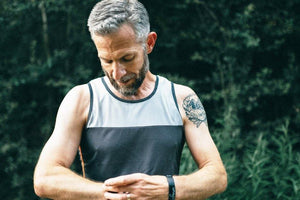In the UK, we throw away billions of plastic bottles every year. Here are some facts about plastic that may shock you:
- 275,000 tonnes of plastic are used each year in the UK, that’s about 15 million bottles per day.
- Most families throw away about 40kg of plastic per year, which could otherwise be recycled.
- The use of plastic in Western Europe is growing by about 4% each year.
- Plastic can take up to 500 years to decompose.
At Sundried, our Eco Core range of activewear is made from 100% recycled plastic. But how is it made?

Stage 1: Recycled bottles are taken to a recycling centre where they are shredded so that any liquid is removed. They are then boxed up to be shipped to stage 2.
Stage 2: The bottles are sorted into clear and coloured plastic, stickers, and bottle lids. They are put in a bath where the lids float to the top and can be cleared. Next, it's bath number two in chemicals which help to remove the stickers.
Stage 3: After two chemical baths, the plastic bottles have now become a pile of soggy, clear plastic shreds. So it’s time to dry it off. The plastic spends around 10 hours in what is effectively a slow cooker, rotating until it's dry and ready for the next step in its journey to become activewear.
Stage 4: Next, the mixture is sent through a rotating screw where it is heated to 270 degrees Celsius which melts the plastic, and it is then dropped into large strings which are collected into a container below.
Stage 5: There are now large strings of thread, but it’s not strong enough for activewear just yet. It is reheated and stretched to create stronger, binding fibres.
Stage 6: So what is done with these new stronger fibres? They are torn apart again. Once they are torn apart, you’re left with a fluffy raw substance.
Stage 7: The fluff is sent off to another factory to be made into cloth. A machine lays the fibres into a rough cloth. This rough cloth is then spun into fibre and collected on giant bobbins.
Stage 8: The thread is now ready to be transformed into activewear.
So, what was once rubbish is now sweat-wicking, functional, and stylish activewear! It helps to conserve and protect the planet and contributes to combating climate change.





